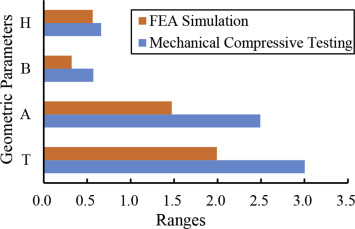Diabetic foot ulcers can be extremely dangerous, so people with diabetes often must wear special insoles to prevent ulcers from developing. In a paper entitled “Design and 3D printing of adjustable modulus porous structures for customized diabetic foot insoles,” a group of researchers discusses using 3D printing to create custom insoles for diabetic patients.
According to the researchers, symptoms can be alleviated by reducing and uniformly distributing plantar pressure, which can be achieved by a customized insole with extra metatarsal dome and arch support. Different regions of the insoles, therefore, should be assigned with different modulus for localized support. Traditional manufacturing methods like molding and machining are not capable of creating insoles with different mechanical properties, but 3D printing can be used to create a porous structure with adjustable mechanical properties.
The researchers selected a typical porous structural unit for their study and 3D printed it using flexible TPE filament. Compressive tests were carried out, along with finite element analysis, orthogonal experiments and a parametrical study.
“Mesh convergence study was carried out first to guarantee the accuracy in FE calculation,” the researchers state. “Since it is a static process, time integration is irrelevant to the result. Focus should be paid on the meshing size. In the analysis, the approximate global size ranges from 0.5mm to 3.0mm with an interval of 0.5mm. Relative errors of these six groups are less than 5%. Because the proper setting of meshing size is determined by the trade-off between accuracy and time span, the approximate global size of 2.0mm is a feasible option.”
Compressive tests and finite element analysis simulations were carried out in parallel, in order to correlate the porous structural design to the effective modulus. The effective moduli determined by the FEA simulation was lower than that determined by the compressive tests. This may be due to the fact that the actual Young’s modulus of TPE material is higher than the value that was assigned in FE model for the material property, or that interference inside the porous structural unit occurred in the compressive test. Other possibilities are that fractures, cracks and other flaws happened within the printed samples, or that the constrains in the FEA model are not identical to the compressive test.
“As the orthogonal experiment shows, wall thickness ‘T’ and long axis ‘A’ are among the most sensitive factor to the effective modulus of porous structural unit while short axis ‘B’ and plate thickness ‘H’ impose relatively rare influence on its mechanical property,” the researchers continue. “…By increasing the long axis ‘A’, the porous structural units will become flatter and decentralize the pressure concentration, which indirectly reduces the effective modulus and form a softer unit.”
The major limitation of the study, the researchers comment, is that only a single type of structural unit was studied. Future studies should expand the choices of other structural units in order to provide more flexibility of low modulus structural design, which will be suitable for a wider range of application.
Authors of the paper include Zheng Ma, Jiacheng Lin, Xiaoyue Xu, Ziwei Ma, Lei Tang, Changning Sun, Dichen Li, Chaozong Liu, Yongming Zhong and Ling Wang.
Discuss this and other 3D printing topics at 3DPrintBoard.com or share your thoughts below.
Subscribe to Our Email Newsletter
Stay up-to-date on all the latest news from the 3D printing industry and receive information and offers from third party vendors.
You May Also Like
3D Printing News Briefs, April 20, 2024: Manufacturing 4.0 Consortium, Blow Molding, & More
We’re starting with news about a manufacturing consortium in today’s 3D Printing News Briefs, as OPEN MIND Technologies has joined the Georgia Tech Manufacturing 4.0 Consortium. Moving on, industrial machining...
Meltio and Accufacture Unveil Robotic Metal 3D Printer Made in the US
Meltio has partnered with Michigan-based robotics firm Accufacture to introduce Alchemist 1, a robotic cell designed for wire-laser metal 3D printing made in the US. This new system represents a...
3D Printing News Briefs, April 13, 2024: Robotics, Orthotics, & Hypersonics
In 3D Printing News Briefs today, we’re focusing first on robotics, as Carnegie Mellon University’s new Robotics Innovation Center will house several community outreach programs, and Ugogo3D is now working...
Rail Giant Alstom Saves $15M with 3D Printing Automation Software 3D Spark
3D Spark has entered into a three-year deal with the rail giant Alstom. Alstom, a transport behemoth with annual revenues of $16 billion, specializes in the manufacture of trains, trams,...

































